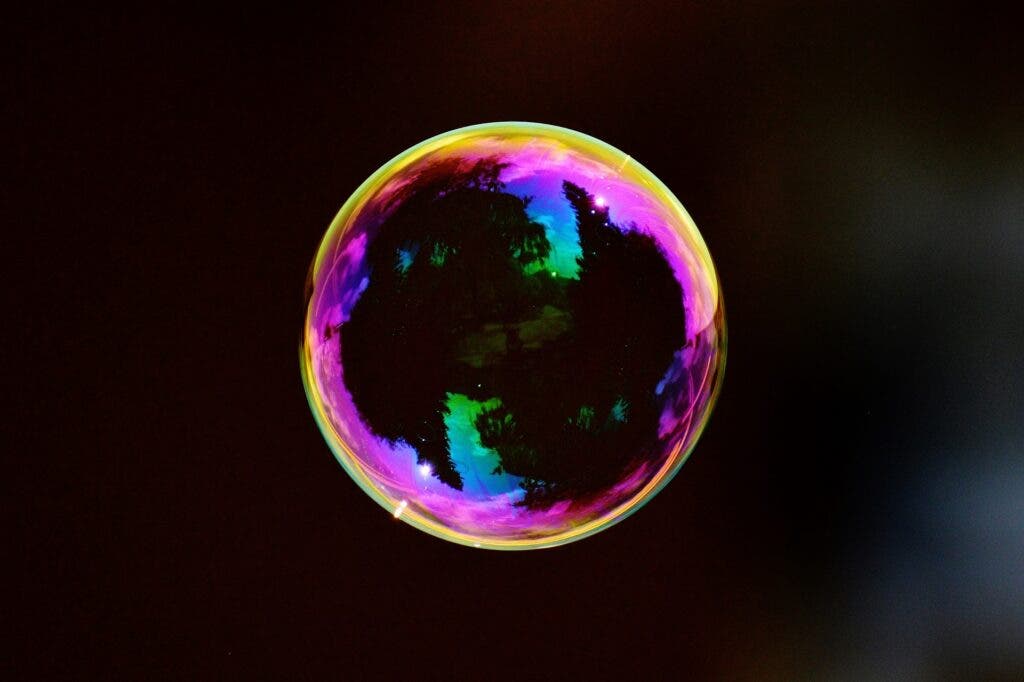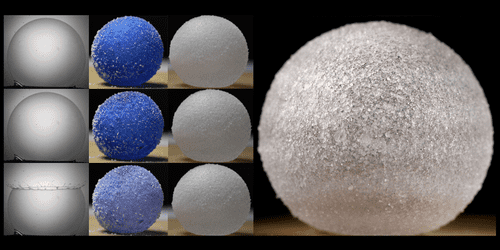
Soap bubbles can be dazzlingly beautiful and entertaining, especially if they’re wielded by a good bubbleologist — a person who makes soap bubbles professionally. The show never lasts long though, as the bubbles pop within seconds or minutes. But not all bubbles are so ephemeral and fragile.
In a new study, researchers in France described how they created a so-called ‘everlasting bubble’ out of water, glycerol, and plastic particles. True to its name, the most resilient bubble made by the scientists survived for a staggering 465 days, which might as well be forever compared to the usual fleeting lifetime of soap bubbles.
“Soap bubbles are by essence fragile and ephemeral,” the study’s authors wrote in their paper that appeared in the journal Physical Review Fluids. “We design bubbles made of a composite liquid film able to neutralize all these effects and keep their integrity for more than one year in a standard atmosphere.”
Soap bubbles naturally take the form of a sphere due to the phenomenon of surface tension, a property of a liquid surface that makes it act as if it were a stretched elastic membrane. In this case, the liquid is the combination of water and soap that traps air. The greater the surface area, the more energy is required to maintain any given shape, which is why bubbles seek to take the shape of a sphere — it’s the 3-D structure with the lowest surface area.
However, the delicate equilibrium that enables surface tension is short-lived in soap bubbles. As the water in the soap film evaporates, the film becomes thinner and thinner until the surface tension is broken and the bubble inevitably pops. When smaller bubbles merge to create large bubbles the resulting bubble is also more fragile.
You can make soap bubbles last a little longer by adding certain surfactants that strengthen the thin liquid soap film, but this will only delay the inevitable.
But not all bubbles are this ephemeral. In 2017, researchers demonstrated a new type of bubble known as a “gas marble” — liquid droplets wrapped in a thin shell made of plastic microspheres. These bubbles were inspired by “liquid marbles”, which are droplets of liquid coated with microscopic, hydrophilic beads. Both types of structures are very stable and can sustain relatively large external forces.
For instance, liquid marbles can be rolled around a solid surface without breaking apart, and gas marbles are tenfold stronger than liquid marbles.
These interesting properties allow gas marbles to last a lot longer than soap bubbles before popping, but no one has ever tested just how long they can last — until now.

Researchers at the University of Lille in France performed an experiment in which they blew three different types of bubbles: soap bubbles, water-based gas marbles, and water-glycerol-based gas marbles. Glycerol is a compound found in soap that bonds well with water molecules.
The soap bubbles were obviously the most unstable, lasting less than a minute. The water-based marbles lasted much longer, collapsing in 6 to 60 minutes. But the water-glycerol-marbles were by far the winner, remaining intact for much longer. The longest-lasting one survived for 465 days.
Everlasting bubbles owe their whopping longevity to the stabilizing effects of glycerol, which has a strong affinity with water and can soak up water from the air to make up for the quantity lost to evaporation. Meanwhile, the tiny plastic particles prevent water drainage from the shell. Together, both effects combine to protect the bubble from rupturing.
Okay, that’s pretty cool, but what good is it to have an ‘everlasting bubble’? The researchers didn’t detail any practical applications to this research in their study, but there could be some uses in areas where preventing evaporation is important. For instance, everlasting bubble coating could be used to shield certain medicinal aerosols and sprays so they last longer in the atmosphere.









